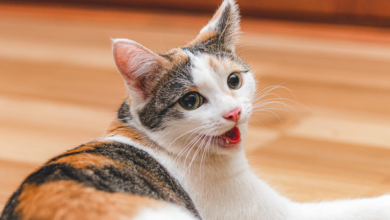
The Most Common Holiday Pet Hazards
The holiday season is a time for joy, celebration, and spending time with loved ones. However, amidst all the festivities, it’s important to remember that the holidays can pose serious hazards for our furry friends. Learn about the most common holiday pet hazards and how to keep your furry friends safe in this informative article.
From toxic foods to decorations, many things can risk your pet’s health. In this article, we’ll take a closer look at the most common holiday pet hazards and provide tips on how to keep your pets safe.
The Most Common Holiday Pet Hazards:
-
Toxic Foods
One of the most significant hazards for pets during the holidays is toxic food. Many popular holiday foods can be harmful to your pet’s health, including:
- Chocolate: Chocolate contains theobromine, which can cause vomiting, diarrhea, and even seizures in pets.
- Xylitol: This artificial sweetener is commonly found in sugar-free gum and candy but can be toxic to pets, causing a rapid insulin release that can lead to hypoglycemia (low blood sugar), seizures, and liver failure.
- Fatty foods: Foods high in fat can cause pancreatitis in pets, which can be life-threatening.
- Bones: Cooked bones can splinter and cause serious digestive issues or obstruct your pet’s intestines.
Read More: Holiday Pet Parent Tips
-
Dangerous Decorations
Holiday decorations can also pose a danger to your pets. Here are some of the most common hazardous decorations to watch out for:
- Tinsel: Tinsel is a choking hazard for pets and can cause intestinal blockages if ingested.
- Poinsettias: While poinsettias are not as toxic as once thought, they can still cause vomiting and diarrhea if ingested by your pets.
- Christmas lights: Electrical cords can pose a risk of electrocution if chewed by pets.
- Ornaments: Glass or fragile ornaments can break easily and cause injury to your pets if they step on or ingest the pieces.
-
Increased Stress Levels
The holiday season can be stressful for pets, just like it can be for humans. With visitors coming and going, loud noises, and changes in routine, it’s essential to monitor your pet’s stress levels. Signs of stress can include hiding, excessive barking, and destructive behavior. Providing your pet with a quiet and safe space and plenty of exercise and attention can help alleviate stress.
Conclusion:
As you can see, the holiday season can present many potential hazards for our furry friends. Being aware of the most common holiday pet hazards and taking the necessary precautions can help ensure your pets stay safe and healthy during this festive time of year. Remember, extra attention and care can go a long way in keeping your pets happy and healthy.








2 Comments